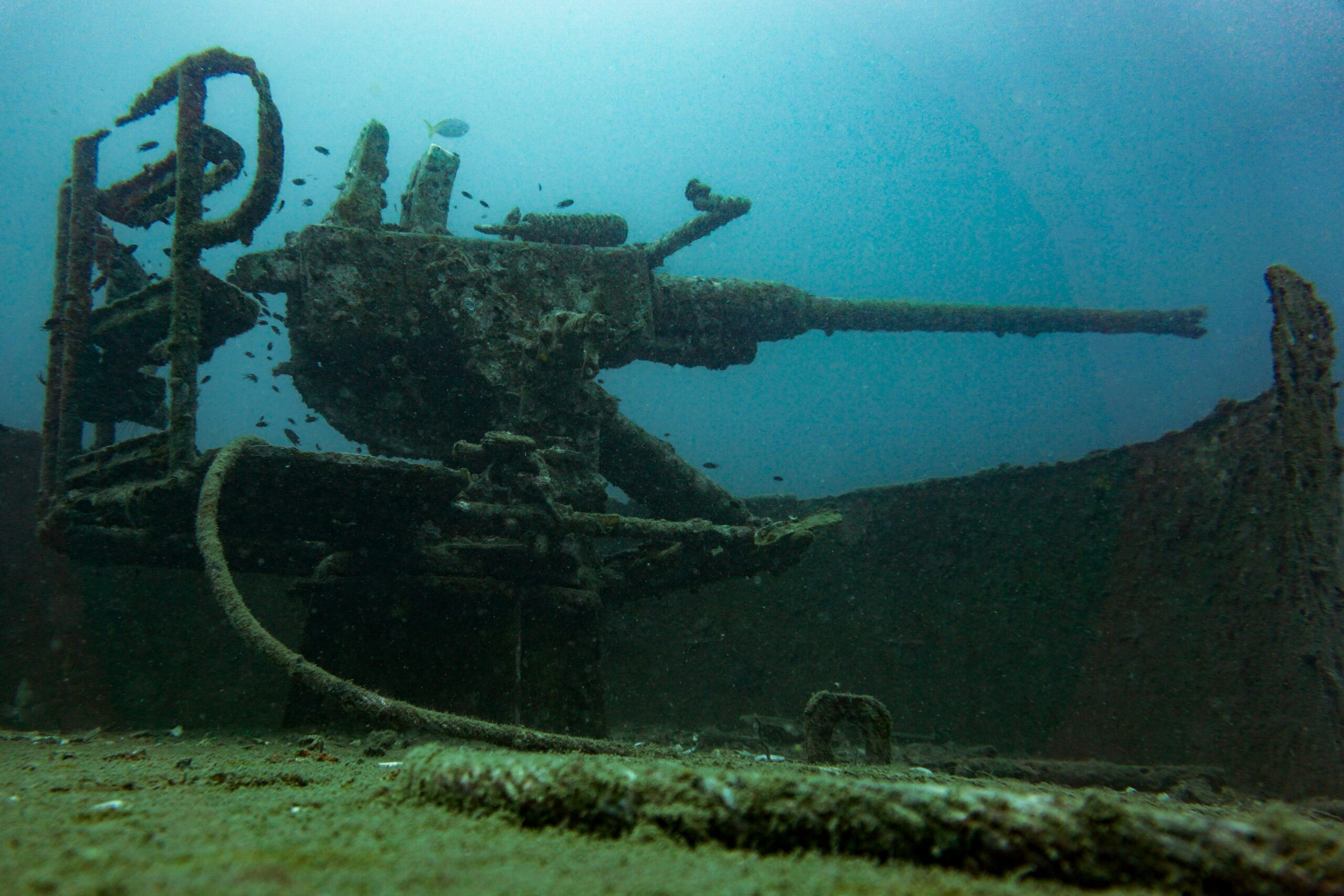Photo of a sunken ship by Wouter Naert
A team of maritime experts has commenced an in-depth survey of the World War I-era warship HMS Cassandra, sunken off the coast of Estonia in 1918. The initiative aims to assess and mitigate potential environmental hazards posed by the wreck, which lies in shallow waters approximately 20 meters deep. The ship, a Royal Navy cruiser, was lost after striking a mine during the war.
The ongoing survey is part of Project Tangaroa, a global collaboration involving the UK Ministry of Defence’s Salvage and Maritime Operations team (SALMO), Waves Group, and other international partners. This project seeks to evaluate the condition of sunken vessels from the World Wars, many of which contain hazardous materials such as oil, unexploded munitions, and other pollutants that can leak into the marine environment over time.
The HMS Cassandra wreck is considered a critical site for this study due to its relatively accessible location and the potential insights it offers into the broader issue of marine pollution from historic shipwrecks. Experts caution that with over 8,500 potentially polluting wrecks identified globally, the risk of environmental contamination is significant, particularly as climate change accelerates the degradation of these structures. The findings from the Cassandra survey are expected to inform future strategies for managing and mitigating the environmental impacts of such wrecks.
Matt Skelhorn, Head of the UK Ministry of Defence’s Wreck Management Programme at SALMO, stated that the findings would be broadly shared as the UK collaborates with Estonian authorities to prevent oil leaks from damaging the Baltic Sea.
HMS Cassandra, he argues has the “potential to become a blueprint for future international collaboration when it comes to addressing the risks caused by potentially-polluting wrecks.”
While the survey progresses, the broader international community continues to explore frameworks for addressing the challenges posed by sunken wartime vessels, balancing environmental protection with considerations of historical heritage.
